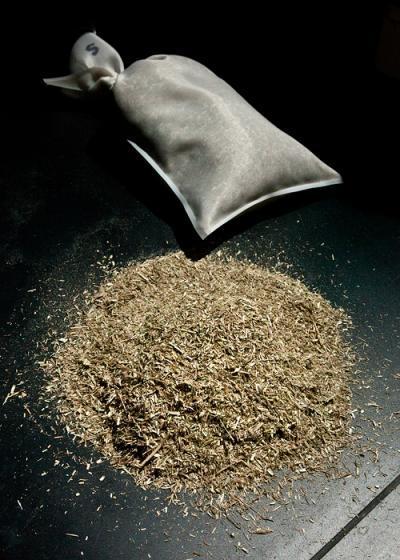Feb
4
New Tools From Cows For Breaking Out Cellulose
February 4, 2011 | 2 Comments
University of Illinois researchers report that they have found dozens of previously unknown microbial enzymes in the bovine rumen – the cow’s primary grass-digestion chamber or stomach – that contribute to the breakdown of switchgrass, a leading candidate for a renewable biofuel energy resource.
The team sequenced and analyzed 268 gigabases of “metagenomic” DNA from microbes that adhered to plant fibers incubated in cow rumen, a huge undertaking. This “metagenomic” approach, led by Edward Rubin, of the DOE Joint Genome Institute and the Lawrence Berkeley National Laboratory, analyzed all the genes in all the microbes present in a sample, rather than one at a time.
U. of I. animal sciences professor Roderick Mackie explains the metagenomic approach gives a more accurate picture of the processes in the rumen that make plant degradation possible saying, “Bacteria are microbes. They live in consortia, and they all contribute to the functioning and the services provided.”
The metagenomic approach set the team up to identify 27,755 potential “carbohydrate-active” genes. They cloned some of these genes into bacteria, and successfully produced 90 proteins of interest. They found that 57 percent of these proteins demonstrated enzymatic activity against cellulosic plant material.
The research now published in the journal Science, tackles a major barrier to the development of more affordable and environmentally sustainable biofuels. Cellulose, hemicellulose and lignin are the main plant products for expanded biofuel production. These plant structures are where the cow has the breaking down plant matter and converting it to energy all figured out. A cow’s digestive system allows it to eat more than 150 pounds of plant matter every day and convert those difficult products and digest them into useful blood sugars.
That contrasts to consuming simple sugars found in food crops such as corn, beets or sugar cane that can be environmentally costly and some believe threatens the human food supply. The cellulose to fuel challenge, whose solution always seems just around the corner, depends on getting sugars into fermentation to produce fuels. A biological solution seems best as it avoids heat and harsh chemical treatments – either way breaking these products up into the sugars and releasing the energy is not easy.
Mackie, sets the stage for the new approach saying, “The problem with second-generation biofuels is the problem of unlocking the soluble fermentable sugars that are in the plant cell wall. The cow’s been doing that for millions of years. And we want to examine the mechanisms that the cow uses to find enzymes for application in the biofuels industry.”
Starting in 2008 Mackie with Washington State University professor Matthias Hess who is first author on the new study, and was then a postdoctoral researcher at the U.S. Department of Energy’s Joint Genome Institute in California, used a decades-old technique for studying ruminant nutrition. They placed small, mesh bags containing either milled alfalfa or switchgrass through a ‘cannula’ (a permanent, surgically installed portal) into the cow rumen or stomach and examined the microbes that adhered to each plant type after two or three days. Visual and chemical analyses showed that microbes in the rumen were efficiently breaking down both types of plant matter, with a different community of microbes attacking each plant type.
Mackie, who is also a professor in the U. of I. Institute for Genomic Biology explains a series of experiments proved that the technique could help scientists find the microbes in the cow rumen that were most efficient at degrading a particular type of plant matter.
Hess pointed out the team was also able to assemble the genomes of 15 previously “uncultured” (never before grown in a lab) microbes. Several techniques, including sequencing the genomes of individual cells and comparing those to the assembled genomes, validated this approach, he said.
These results suggest that the bovine rumen is one of the best microbial habitats to explore for sources of plant-degrading enzymes, the researchers reported.
The research team also included scientists from the DOE Joint Genome Institute, the University of California at Berkeley and Illumina Inc. The full list leads the paper’s abstract, here’s the study link again. The BP-sponsored Energy Biosciences Institute funded the research carried out at Illinois. There’s British Petroleum again . . .
Comments
2 Comments so far



Will you please get an editor!
The head line should read:
“New Tools From Cows for Breaking Out Cellulose”
Now it does. Thanks for the help!
BW